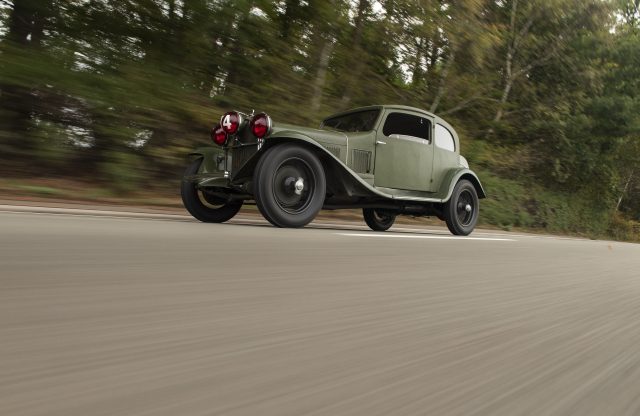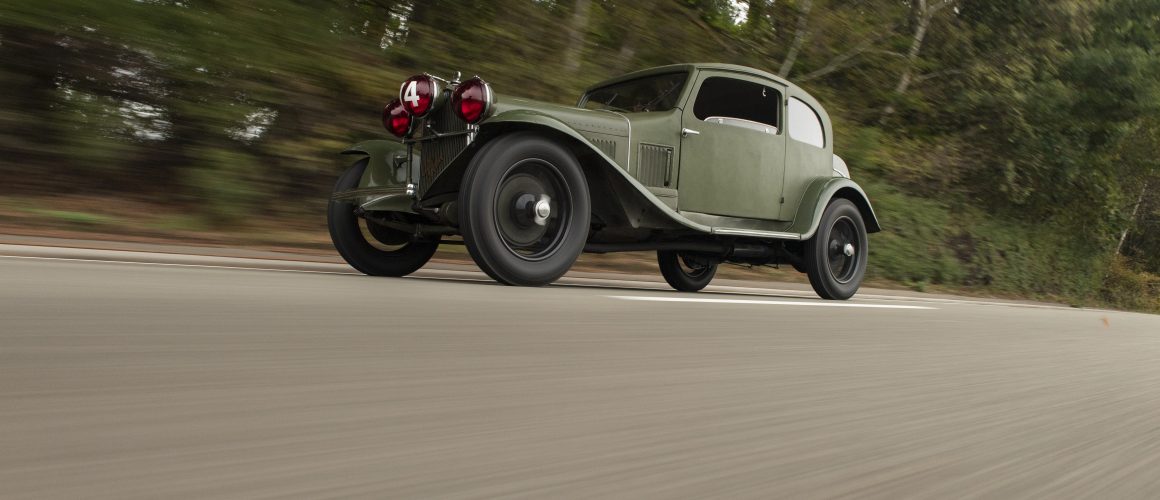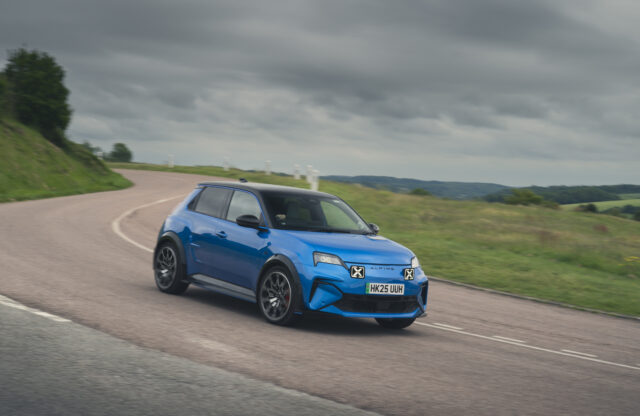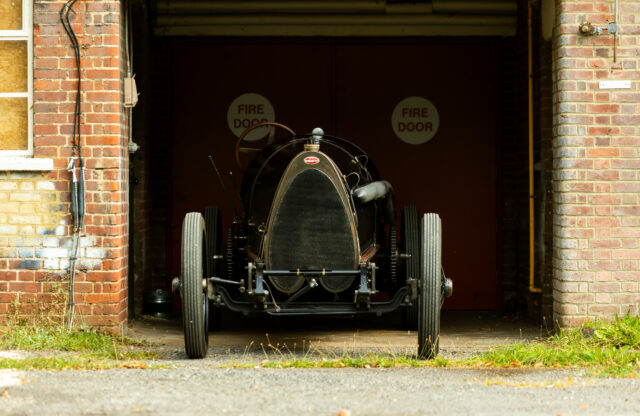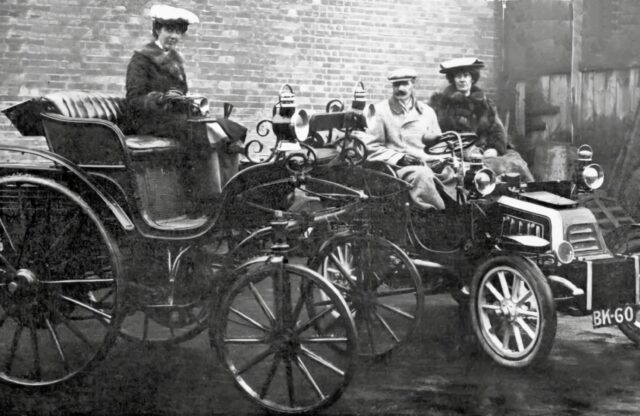WORDS: JOHAN DILLEN | PHOTOS: DIRK DE JAGER
It was in a 6C 1750 that Nuvolari pulled off a stunt in the 1930 Mille Miglia – actually by switching off his headlamps. As he was closing in on Achille Varzi, Tazio didn’t want to alert his team-mate of his presence, so the Mantovan daredevil turned off his lights and followed Varzi in the dark. Only upon overtaking did Nuvolari illuminate the way once again… or so legend has it.
This story originally appeared in Magneto issue 10
There are a couple of footnotes to add to that story. The first being that Alfa Romeo’s technical director Vittorio Jano had frozen positions – having assured Varzi, who was running first on the road, that the race was his. Suffice to say, Varzi was not a happy man at the finish line. Also, in the classification, Nuvolari was already ahead by the time he had wheeled in Varzi, having left Brescia minutes behind his rival. Nuvolari would be the first to cover the whole 1000-mile course at an average speed of just over 100km/h.
Those startling red light covers had a double function. On the one hand, they were shields that were used to protect the headlamps from stones projected up from the road. But the red light was also less tiring on the driver’s eyes. At night, sometimes the red covers were used and sometimes they were removed.
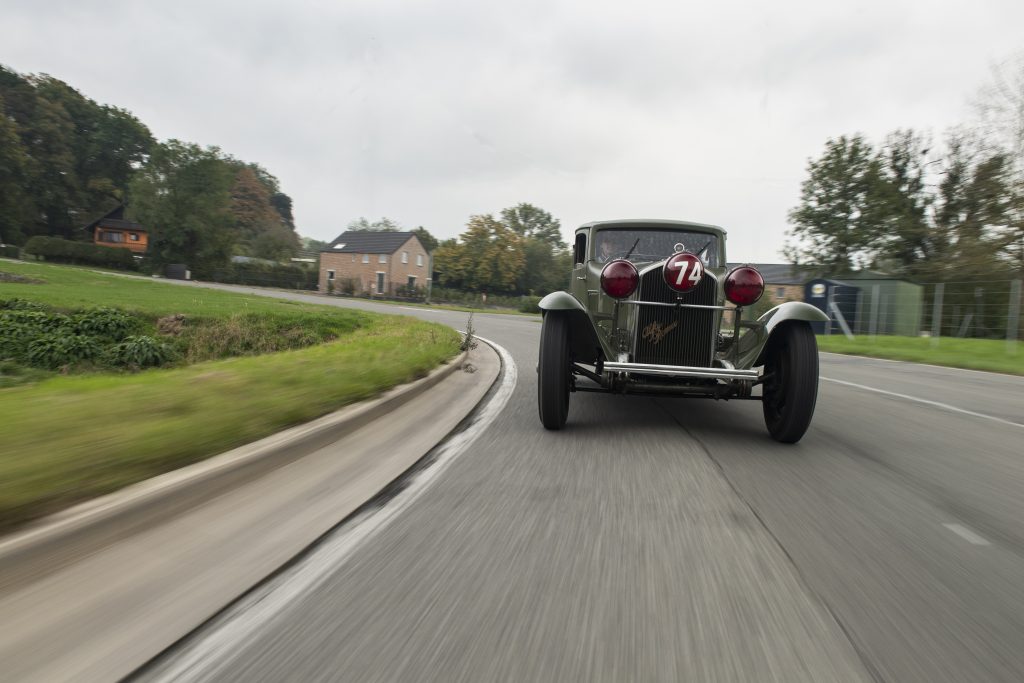
It does make for a unique spectacle, though, when you see the road before your eyes suddenly turn red. This can mean only one thing; you are behind the wheel of one of the fabled Alfa Romeos. This is not a Zagato-bodied 6C 1750 Gran Sport Spider as Nuvolari and Varzi drove, but an even rarer 6C 1750 Touring Berlinetta Aerodinamica. It has a story of its own to tell. Not only is this the sole known survivor of just three or four cars built, but this car also won its class in the 1933 Mille Miglia.
The 6C was essential in forming the Alfa Romeo myth, and it played its part in establishing the dominance of the Milanese brand in the Mille Miglia. Before World War Two, the manufacturer was denied overall triumph in the famous road race only twice in 12 participations. And it’s not just the victories; Alfas often also dominated the top ten and the various classes. Before the war, it simply crushed the competition at the Mille Miglia. The 6C would win on three occasions, taking first through fourth places in the controversial 1930 running.
With the 6C – short for six-cylinder – Vittorio Jano followed up on his successful eight-cylinder P2 single-seaters. Even before a capacity rule change had forced Alfa out of Grand Prix racing, Jano had already been given the task to come up with a 1.5-litre engine to prove that the company could produce a smaller road car that would still honour the marque’s sporting credentials. In 1925, the first of the 6C series made a public debut at the Milan Motor Show.
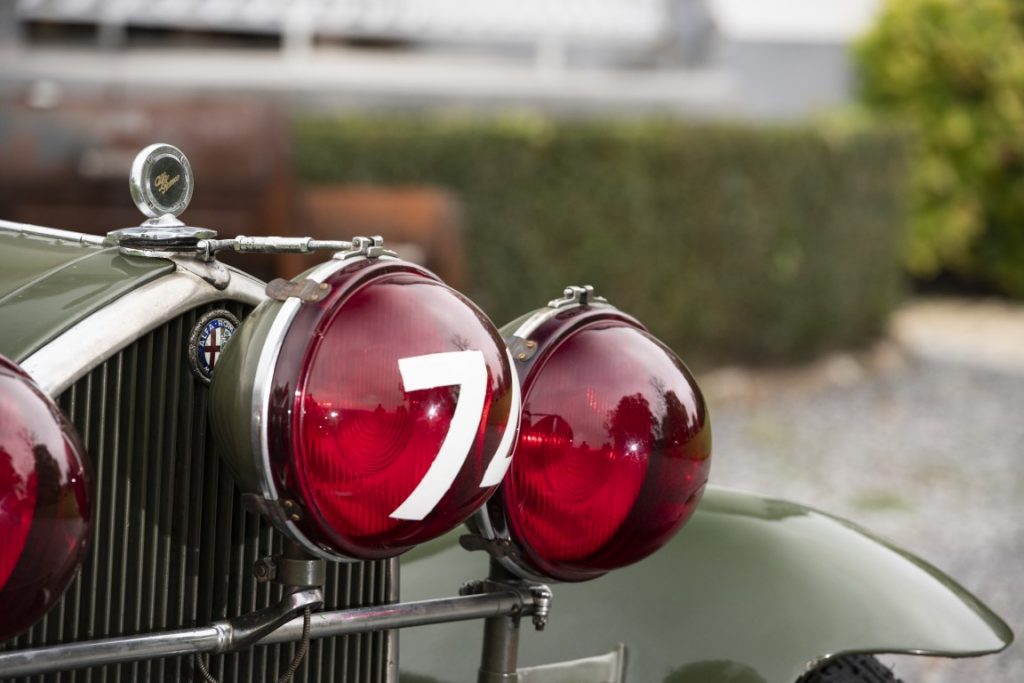
True to his style, Jano innovated with a 1487cc six-cylinder engine that boasted a single overhead camshaft instead of the traditional pushrod-operated technology Alfa was using up until then. As of 1926 the company would commercialise the first 6C 1500 models but, as soon as 1927, line-up changes were made. Next to the single-camshaft Normale, a twin- camshaft Sport appeared, pushing power up by 10bhp to 54bhp. In 1928, the Mille Miglia Speciale appeared – special because the engine was moved 20cm rearwards to make room for a Roots compressor. It took victory in the Mille Miglia, of course.
By 1929, Alfa Romeo had come up with an answer to the stiffened competition from Bugatti and Maserati. For the third series of the 6C, the engine was upgraded to 1752cc. In Sport trim, with double overhead camshafts, the 6C 1750 managed 64bhp. A supercharged 6C 1750 Super Sport would pump out 85bhp. Of the 26 supercharged 6C 1750s entered in the 1929 Mille Miglia, 25 were at the finish – and, of course, victory went Alfa’s way. Winner Giuseppe Campari defeated a 2.0-litre OM on his way to victory. In those days, it was Alfa Romeo or nothing.
Alfa was selling these cars to the public, in different coachwork forms and from different carrozzerie. Management was eager to prove to customers it had models that could be successful in other Mille Miglia categories as well – which is where this example comes in.
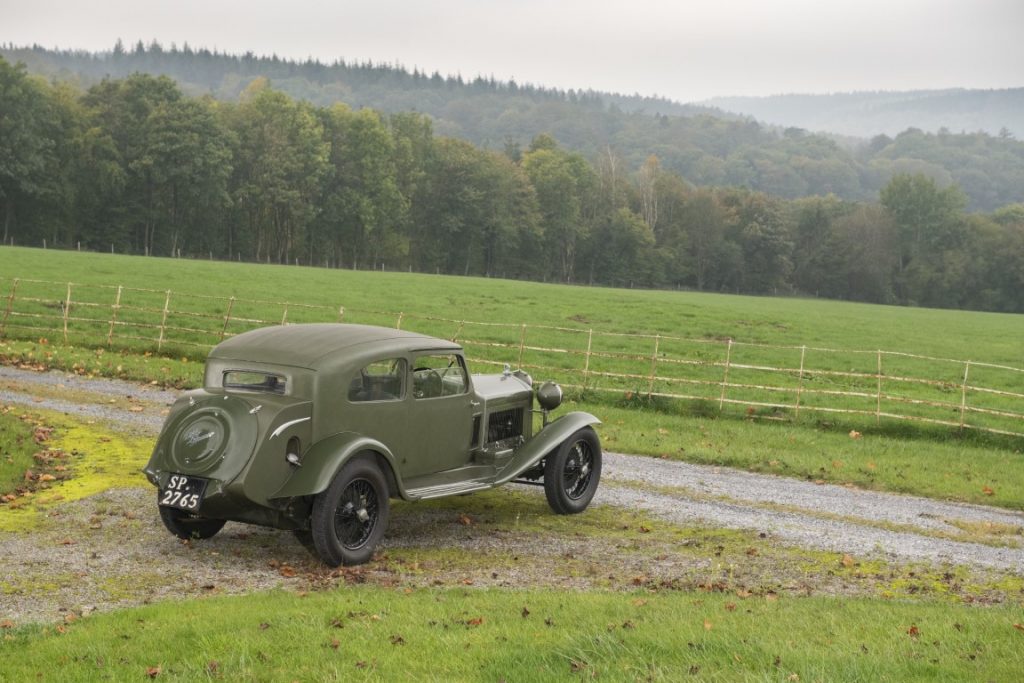
“It started life in 1931 as a 6C 1750 GT competition chassis, with a twin-cam engine but no compressor,” explains caretaker Philippe Mulders. “Alfa sold the car, chassis 10914569, to Gianangelo Sperti, chief engineer of the Alfa Corse department. He first road- registered it in Firenze in 1932, as FI 738. Officially, this made it a private car, but of course there was factory involvement from the Alfa factory in Portello.”
These were complicated times, in which financial injections and ultimately a complete takeover from the fascist-run Mussolini regime led Alfa to officially take a restrained approach towards ‘money-guzzling’ racing. As such, the marque’s competition activities were sub-let to Enzo Ferrari, and Sperti was officially a private entrant in the 1933 Mille Miglia.
His was one of three 6C 1750s entered in the closed-car class for 1933. The coachwork was especially created by Touring, and only three or four of these Berlinetta Aerodinamica versions were ever made.
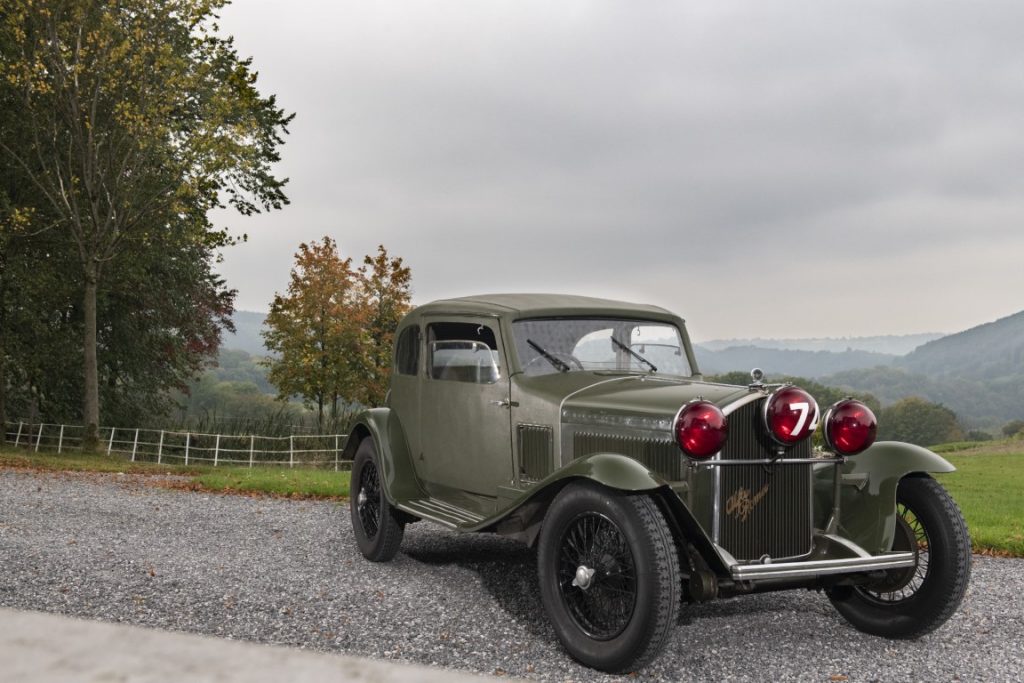
“Touring’s own take of the Weymann method predates the Superleggera principle it would later adopt,” explains Mulders. “But it clearly shows Touring was already looking into ways to make the coachwork as low and light as possible. Except for the front windshield, all the windows are made in composite material.”
A fabric skin is wrapped around an aluminium frame structure. The bodywork is basic, weighs in at a laughably low 140kg. The benefits show the minute we get on the road. This may be a non-blown version of the 6C 1750, but it has no difficulty in feeling powerful. I’m most impressed watching Mulders at work behind the wheel, showing me how it is done.
In the cabin’s cosy environment, the driving lesson feels intimate as I observe his legs dance effortlessly while he double-declutches and heel-toes around the central throttle position. His gearbox shift manoeuvres are lightning fast; he just tick-tocks the long lever round the gate quicker than you could change ratios in a new Golf. “Really, it’s the quality of this car that allows for this kind of driving,” he says almost apologetically.
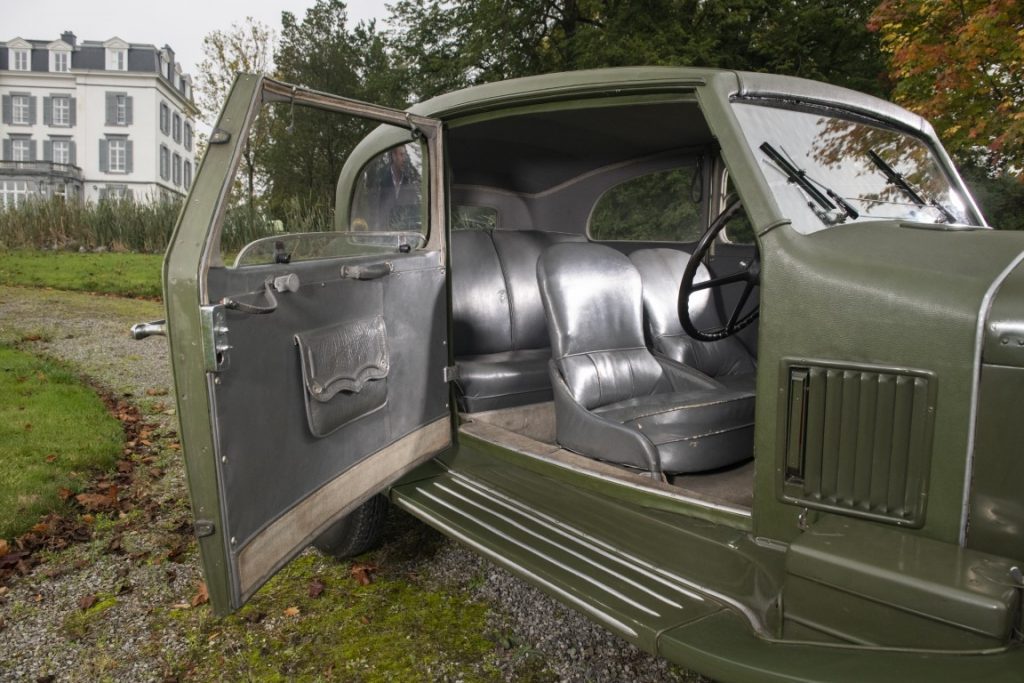
The six-cylinder is very much the essence of this Alfa Romeo. It is omnipresent in sound and impressive in feel. Only the transmission noise cancels out some of the engine resonance. The motor sounds much deeper, belying its nimble capacity and providing sufficient push to make you wonder whether this really is ‘just’ a naturally aspirated version of that fabled Alfa powerplant.
As Mulders points out, the engine has barely 800kg to propel. The combo is impressive, with this 90-year-old veteran easily holding its own in modern traffic. “Make no mistake about it,” he says. “This car may be old, but it was always a racer, built to go as fast as it can.”
When my time comes to give it a go, I have to acknowledge that there is a lot to get used to in a short time-frame. Let us begin with the steering position. The wheel is close to your chest, while the pedals are further removed, making for a stretched-legs-bent-arms driving approach that takes some miles before it starts to feel comfortable. Your lower back is firmly held in place in the custom-made bucket seats. By the way, this is the original and astonishingly well preserved upholstery – but more on that later.

The 6C 1750 starts on the first turn of the crank, and is surprisingly quiet. It has a little clutch travel, but taking off is really the easy part. Once the gearbox is properly warmed up, there is no longer the need to double-declutch on the upshifts. You need to be decisive with your movements, but with just the softest of clicks, the lever slots into place in the next of the four available forward gears. Silky smooth.
The 6C 1750 overcomes the drop in the revs with ease, responding instantly to the throttle’s demand. That central pedal takes time to adjust to if you’re new to this game, and when the braking, steering and downshifting all come at the same time, mistakes are bound to happen. The gearbox teeth will angrily curse your clumsiness. Double-declutching on the downshift is essential, and I make a bit of a dog’s breakfast of things. The transmission protests, Mulders winces in the passenger seat and I just can’t help feeling terrible at my own incompetence in not living up to the standard this car deserves.
Even feeling uncomfortable as I do right now, the genius of the car shines through and I pick up on it. For starters, the steering is not just light, but it’s also incredibly precise. I quickly start aiming the nimble 1750 through the artificial chicanes that pop up on the road, comfortably keeping it in third and letting the engine roar enthusiastically.
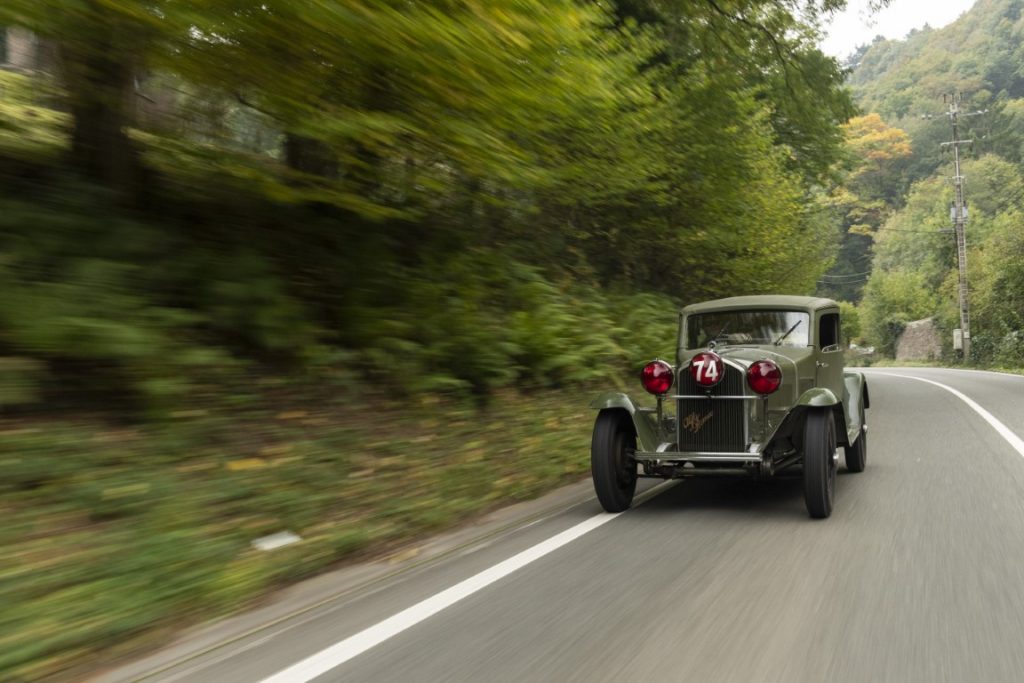
There is none of the ‘approximate’ approach you often detect in other pre-war cars. On the contrary, the Alfa slices decisively at your command. Body roll is well contained, making quick transitions in the corners possible. This fast and nimble nature would have paid dividends on the more mountainous stretches of the Mille Miglia.
We only take the engine up to 4000rpm – still some way to go before it reaches the 6000rpm red line against which it would have been pushed for hours on end come race day. The brakes wear their racing heritage on their sleeve, offering strong performance throughout. It is impossible not to fall in love with this car.
Production of the 6C 1750 ended in 1933. In racing, the 8C 2300 brilliantly followed in the footsteps of the ageing model. For racing, Alfa moved towards eight-cylinder engines, but in the road division the six-cylinder would remain important. Post-war, an evolution of this unit came back in 2500cc form, while the famed 2.0-litre four-cylinder twin-cams that followed in the 1950s had all the characteristics of the 6C engine, minus two cylinders. It wouldn’t be until the 1980s that evolution would come; Giuseppe Busso kept the six cylinders, but opted for a V6 instead of an inline configuration.
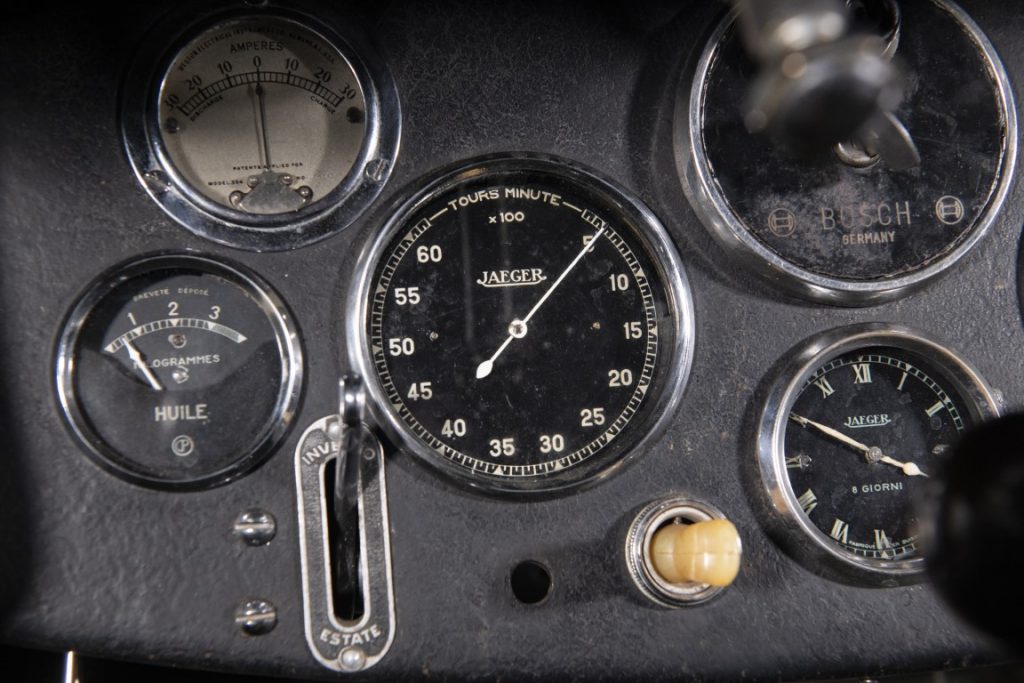
With the Berlinetta Aerodinamica, Touring clearly demonstrated its understanding of the importance of a small frontal area. More crucially, it was a couple of years ahead of the French designers in working out that the teardrop shape towards the rear was the ideal solution in the search for more speed.
There were no wind tunnels yet to substantiate this vision with a scientific approach, but our Berlinetta clearly showed the theory worked in the 1933 Mille Miglia, when Sperti drove this very car to a class win among the closed models, racing for 17 hours and 49 minutes on end. That year, three closed 1750s competed in the event, with two reaching the finish. In fact, the top 20 consisted of no fewer than 19 Alfa Romeos, with the two Touring- bodied Berlinettas finishing 17th (this car) and 18th. Ours is the only known example left. Wait, there is more! It is not just the sole survivor, but it’s also incredibly well preserved. There is reason to assume that the odometer’s 24,000km reading is in fact correct.
“The Alfa remained in the Firenze-Bologna region for most of its life,” Mulders says. “After the Mille Miglia, Sperti sold it in 1934. It changed hands a few more times, before Mauro Ceretti bought it in 1935. He kept it for 33 years.”
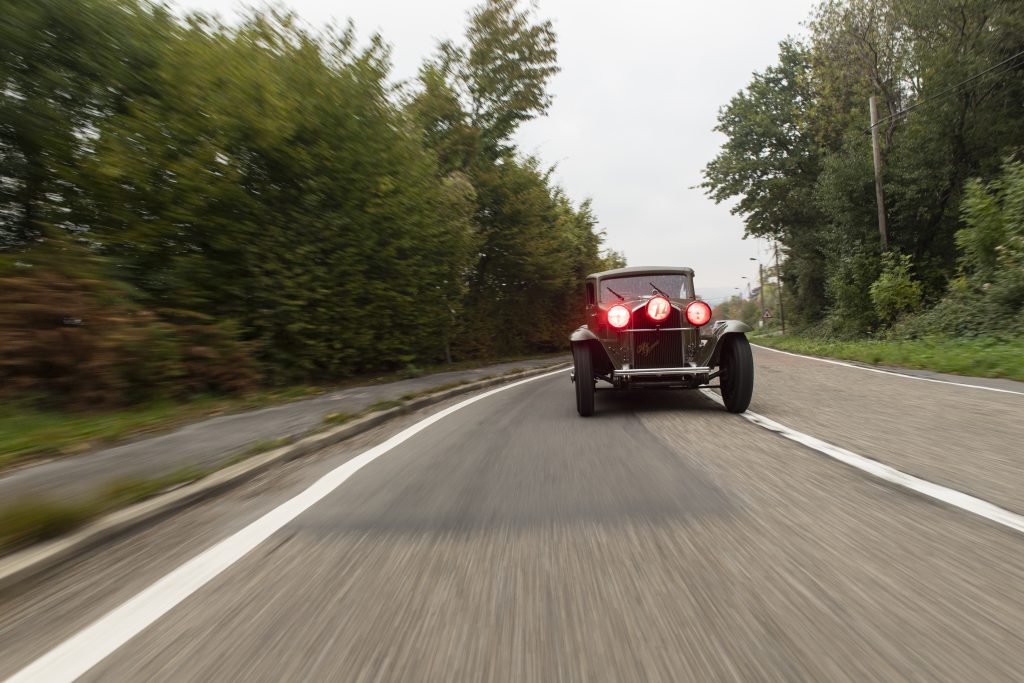
More owners were to follow, but the Alfa was always sold on as a static object: “The fabric of the skin was restored at one point, probably before 1968 even. And we think the mudguards were resprayed around the same time, because the paint used has post-war characteristics. But other than that, this car is very much in the same condition as it left the factory in 1931.”
In what can only be described as an incredible vote of confidence in the vehicle’s quality, it was re-registered in 1982. New oil, new number plate, and go. “It was used only occasionally, we think,” Mulders says. “In 1994, with a new owner, this car did one more Mille Miglia.” Up until this point, it would look as though the mileage was more a matter of presumption than a fact.
That changed when the current custodian, Dutch pre-war expert Jaap ‘Jack’ Braam Ruben, had managed to buy the car from an Italian private collector and decided to open up the engine. “We just wanted to see the condition,” says Mulders. “It was astonishing – there were hardly signs of wear. In fact, it was just a matter of cleaning the parts, and then we closed the engine again.” You could run it in the Mille Miglia again now; this car is a guaranteed entry.
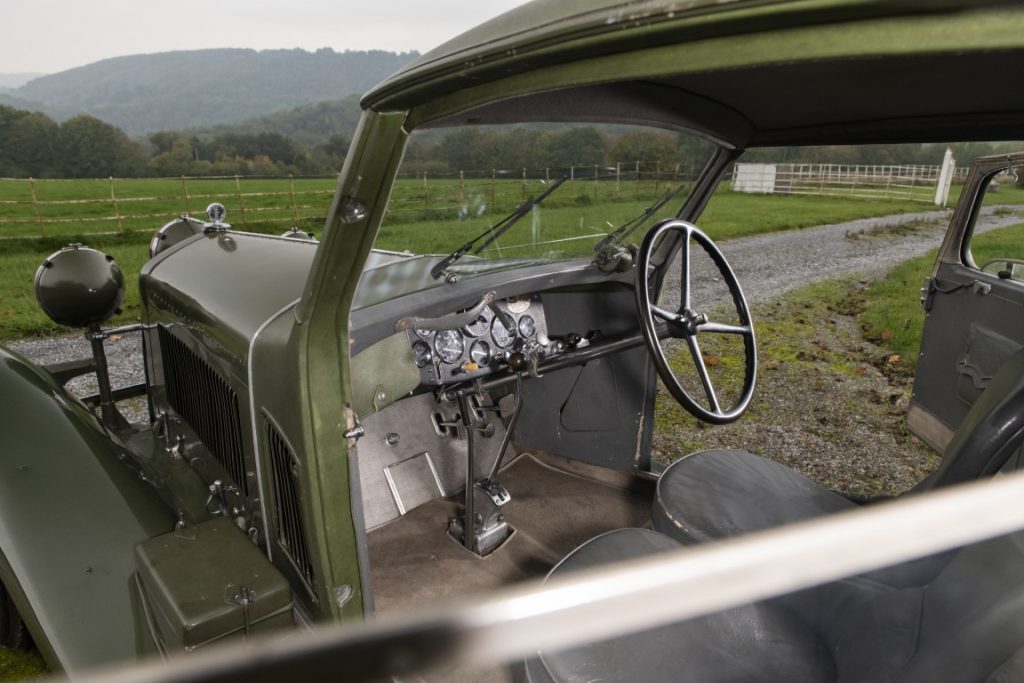
The thorough examination revealed the particular attention this ‘privately owned’ 6C 1750 had received in period. “A conrod bears the Alfa Corse stamps. We also found Alfa Corse stamps on the rear suspension, and it was clear this car benefitted from some of the updates Alfa had used on the 8C 2300 factory cars. For instance, as with the Monzas, it has an electric fuel pump instead of the normal auto-vacuum system you’d otherwise find on a 6C. It also has the same freewheel hub at the rear as you’ll see on the 6C 2300s.” One can say these are the small benefits of the owner working in the Alfa Corse department.
Perhaps the finest treasure was hidden in the boot. “The car has two spare wheels. The furthest one turned out to be one of the original Pirelli Corses, a tyre that had gone out of production after World War Two. No one had touched it in all that time. It is no longer usable for driving, but for display it is magnificent.”
All of the Berlinetta Aerodinamica models have slightly different details. “This car has no taillights; no holes were ever drilled in the rear mudguards to place them. And at the front, there are different fixings for the three headlights. Such details further confirm the identity.”
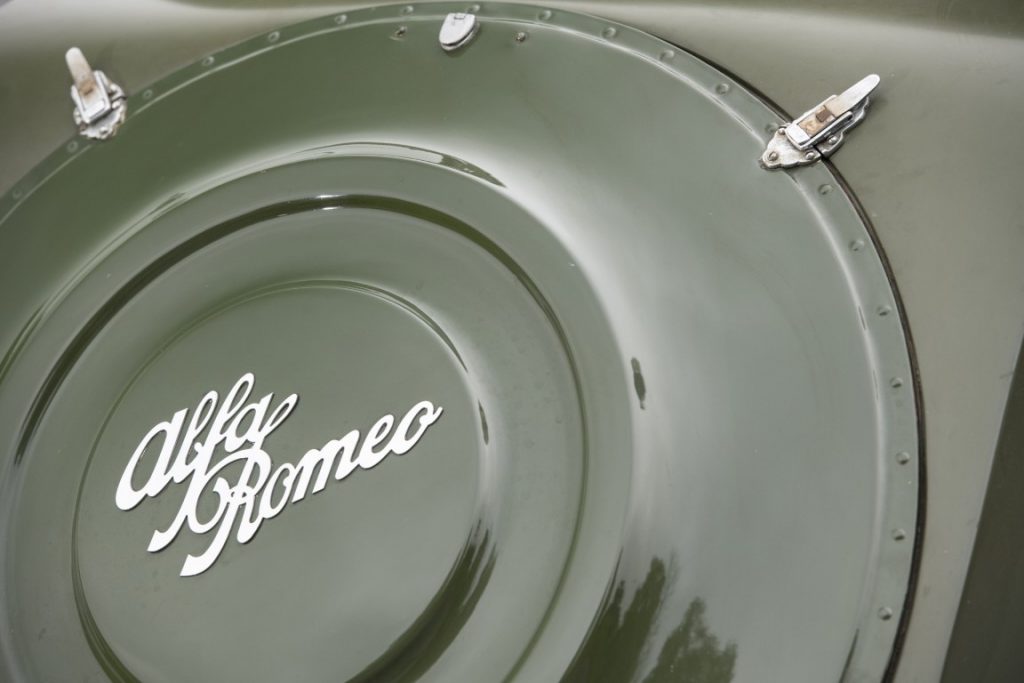
While Alfa Romeo may no longer sell a six-cylinder, it’s still happy to use the 1750 badge up to the present day. Even though the product is not the same – oh, how we miss an Alfa six – we can only be happy that this might help to keep the 6C 1750 present in the minds of Alfisti and others. As this car shows, there was a time when Alfa Romeo was simply the best sporting brand in the world. One shouldn’t forget.
Our thanks go to Jaap Braam Ruben and Philippe Mulders (www.fineautomobiles.nl), and Max Luca for the historic backdrop of Château Charles (www.chateaucharles.be).
